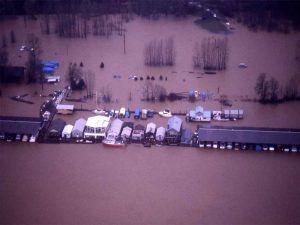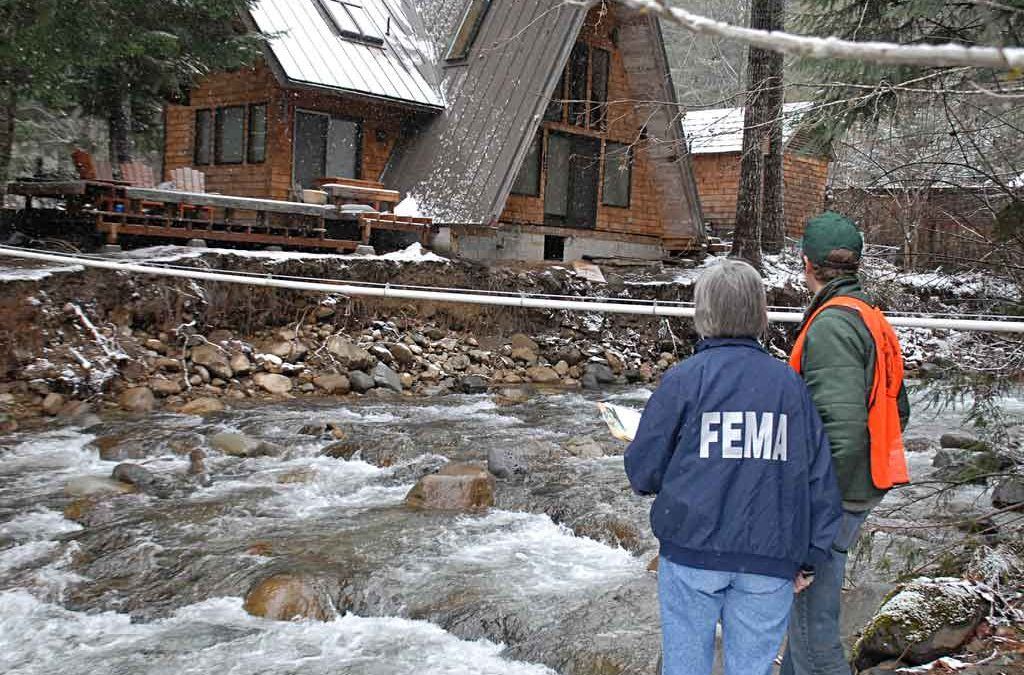Preparing for a storm or extreme weather event is not merely advisable; it’s essential. This guide will provide critical tips to safeguard your home and ensure your family’s safety. From understanding the risks to implementing practical measures, we’ll cover it all to help you navigate these daunting times confidently. Brace yourself, take note, and let’s stormproof your home together.
Your home is your sanctuary, your haven. But how well can your sanctuary resist when Mother Nature unleashes her fury? Many homeowners underestimate the devastating power of extreme weather events such as storms and wildfires until it’s too late. They watch helplessly as their lifetime investments crumble under the sheer force of the elements. But it doesn’t have to be this way. Being unprepared is a choice, not a fate. The question is – will you make the right choice? The stakes are high, and the risks are real. Preparation is no longer just an option; it is an absolute necessity. It’s time to step up, act, and protect what matters most – your home and your sanctuary.
Understanding Extreme Weather
Extreme weather events range from hurricanes to floods, each carrying its own unique set of dangers and potential damage to homes.
Hurricanes
Hurricanes are monstrous storm systems that form over warm ocean waters and move toward land, packing a powerful punch with high winds, heavy rainfall, and storm surges. The high winds can tear off roofing, break windows, and cause structural damage, while the heavy rainfall might lead to flooding. Storm surges can lead to severe coastal flooding, devastating homes in its path.
Tornadoes
Tornadoes are rapidly rotating columns of air that are in contact with the Earth’s surface and a cumulonimbus cloud or, in rare cases, the base of a cumulus cloud. The intense winds of a tornado, which can reach speeds of over 300 miles per hour, can rip apart homes in a matter of seconds.
Wildfires
Wildfires can rapidly consume homes and entire communities, especially in areas with a lot of dry vegetation. The intense heat can cause windows to shatter, allowing the fire to enter the home and destroy it from the inside out.
Floods

Floods can cause substantial damage to homes, especially those in low-lying areas. Whether from heavy rain, a hurricane, or a broken levee, floods can infiltrate homes, causing water damage, mold growth, and structural issues.
Understanding these extreme weather events and their potential impacts is the first step in preparing your home for their onslaught. Forearmed is forewarned; with this knowledge, you’re already one step ahead on storm-proofing your property. Remember, your home is much more than just a building. It’s a place of refuge, a place of memories, and a place that needs your protection.
Home Safety Measures for Extreme Weather
Reinforcing Structural Elements
The structural integrity of your home is the first line of defense against extreme weather. Reinforcing your home’s structural elements can significantly reduce the risk of damage.
- Retrofit your home: Older homes, in particular, may not be built to withstand the forces of extreme weather events. Consult a structural engineer to evaluate your home’s resilience and implement necessary upgrades. This might include securing weak points, reinforcing walls, and strengthening connections between the roof, walls, and foundation.
- Secure heavy furniture and appliances: To prevent these from becoming dangerous projectiles in a hurricane or tornado, secure them to the walls using L-brackets or straps.
- Garage doors: These are often the weakest points of a home’s structure. Reinforce garage doors with braces or replace them with hurricane-rated doors to prevent wind from entering your home.
Sealing Windows and Doors
A home’s windows and doors are vulnerable to extreme weather. Protect them with the following measures:
- Weatherstripping: Seal gaps around windows and doors to prevent drafts and water leaks. This can also improve your home’s energy efficiency.
- Storm shutters: Consider installing storm shutters on your windows, which can be closed during extreme weather to protect the glass from breaking.
- Reinforced doors: Replace hollow entry doors with solid ones or those rated for hurricane pressure and impact.
Maintaining Roofs and Gutters
The roof is your home’s shield against the elements. A well-maintained roof and gutter system can prevent water damage and help your home weather the storm.
- Regular inspections: Inspect your roof regularly for missing or damaged shingles and replace them promptly. Look for signs of water damage, as this could indicate a leak in the roof.
- Gutter maintenance: Keep gutters clean and free of debris. This ensures that water can drain away from your home effectively, preventing damage to your home’s foundation.
- Roof straps: If you live in a hurricane-prone area, consider installing steel roof straps to secure your roof to the house’s frame. This can help prevent your roof from being blown off in a storm.
Preparing your home for extreme weather conditions is not a one-time effort. Regular maintenance and inspections are crucial parts of this process. Be proactive, stay vigilant, and ensure your home remains the safe and secure sanctuary it was meant to be.
Emergency Preparedness Plans
 An emergency preparedness plan is a non-negotiable requirement for extreme weather situations. A robust and well-thought-out plan can be the difference between safety and disaster, between resilience and devastation. It equips you with the knowledge of what to do, where to go, and how to communicate effectively in a crisis, preventing panic and confusion and ensuring the safety of all family members.
An emergency preparedness plan is a non-negotiable requirement for extreme weather situations. A robust and well-thought-out plan can be the difference between safety and disaster, between resilience and devastation. It equips you with the knowledge of what to do, where to go, and how to communicate effectively in a crisis, preventing panic and confusion and ensuring the safety of all family members.
Creating an emergency preparedness plan involves several crucial steps. First, assemble an emergency kit stocked with essential supplies like food, water, medication, first aid supplies, and important documents to sustain you and your family for at least 72 hours. Second, establish a family communication plan that outlines how you will contact each other and where you will meet if separated. Finally, familiarize yourself with local evacuation routes and shelters. Remember, the crux of an effective plan lies in its practicality and the commitment to enforce it. Therefore, rehearse your plan frequently, update it as needed, and ensure all family members are informed and prepared.
Insurance Considerations for Extreme Weather
Insurance plays a significant role in mitigating the financial impact of extreme weather events. It’s crucial to understand what your policy covers thoroughly. Typical homeowners’ insurance policies cover damage caused by wind, fire, and lightning, including wildfires and tornadoes. However, damage from floods and earthquakes often requires separate policies. If your area is prone to specific disasters, you may need to consider additional coverage. Always review your insurance policy periodically and discuss any concerns with your insurance agent to ensure adequate protection.
Documentation of your belongings is another pivotal aspect of disaster preparedness. Keeping an updated inventory of your possessions and their value is invaluable when filing an insurance claim after a disaster. This list, preferably supported by photos or videos, will help substantiate your losses and facilitate the claims process, potentially leading to a faster and more accurate settlement. While this may seem daunting, remember that your preparedness will pay dividends in the face of disaster.
In conclusion, safeguarding your home and family from extreme weather involves comprehensive planning and proactive measures, including reinforcing structural elements, sealing windows and doors, and maintaining roofs and gutters. An emergency preparedness plan, detailed emergency provisions, communication strategies, and evacuation routes are your lifeline in a crisis. Coupled with smart insurance considerations and updated inventory documentation, it forms an integral part of disaster preparedness. These measures, while seeming extensive, are the bulwark against potential devastation. Now is the time to act. Review your insurance policies, and start assembling your emergency kit. And, when disaster does strike, contact the professionals at SureBuild Restoration for expert advice on storm and fire damage restoration options.

